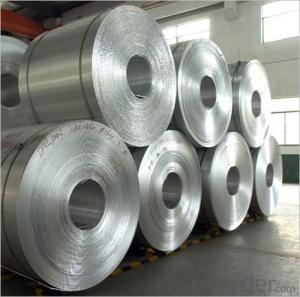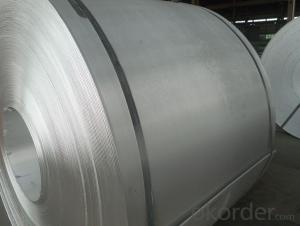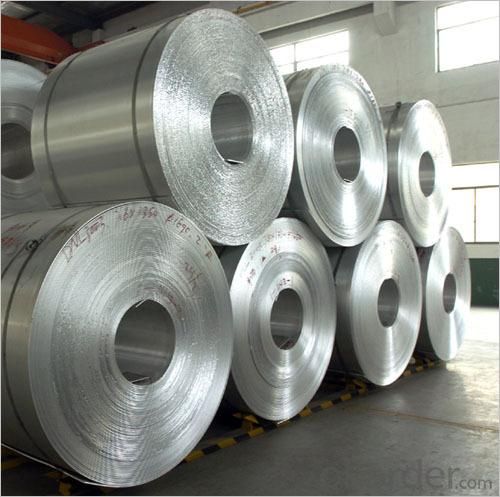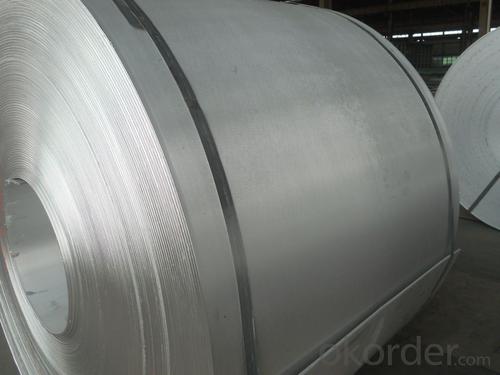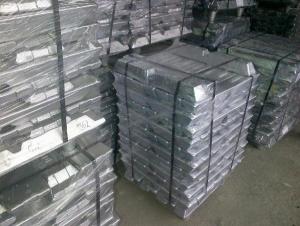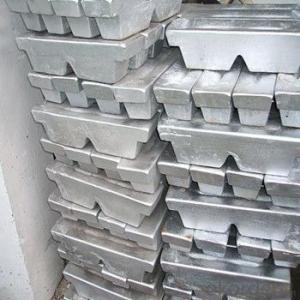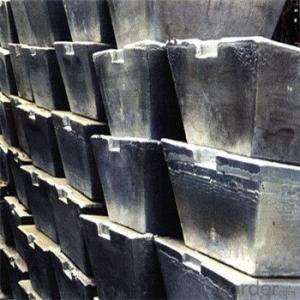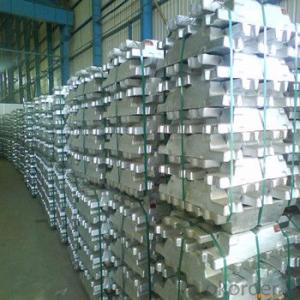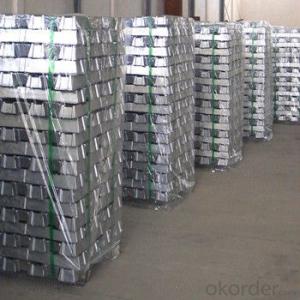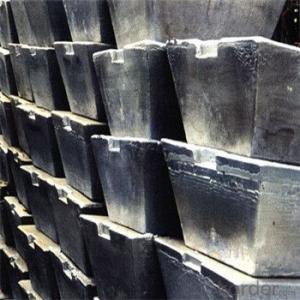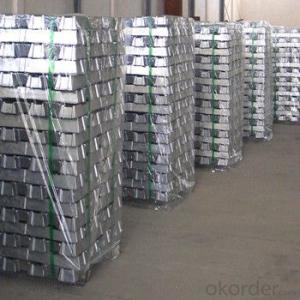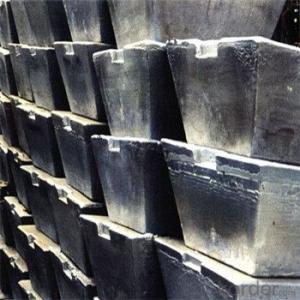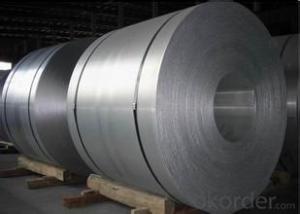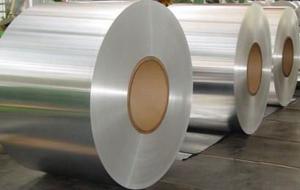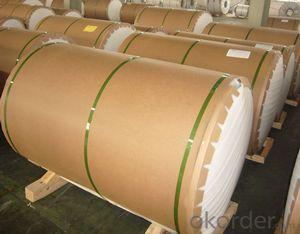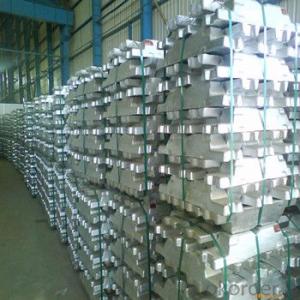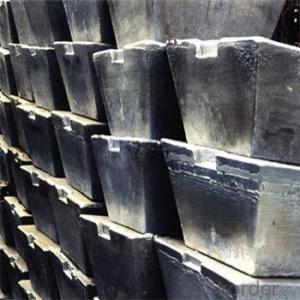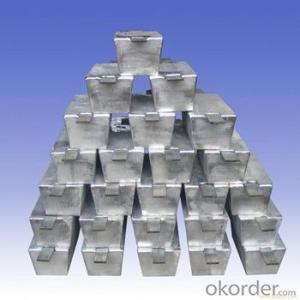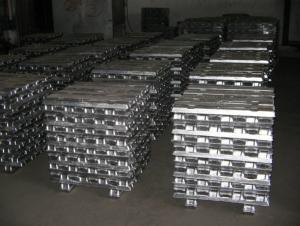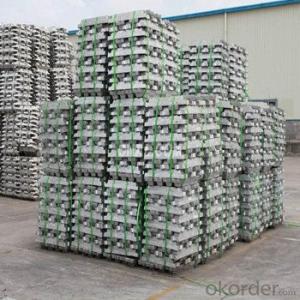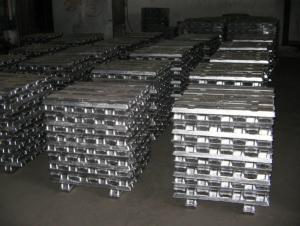Aluminum casting coil AA1070=P1020 for melt
- Loading Port:
- Tianjin
- Payment Terms:
- TT OR LC
- Min Order Qty:
- 200 m.t.
- Supply Capability:
- 5000 m.t./month
OKorder Service Pledge
OKorder Financial Service
You Might Also Like
Aluminium alloys (or aluminum alloys; see spelling differences) are alloys in which aluminium (Al) is the predominant metal. The typical alloying elements are copper, magnesium, manganese, silicon, tin and zinc. There are two principal classifications, namely casting alloys and wrought alloys, both of which are further subdivided into the categories heat-treatable and non-heat-treatable. About 85% of aluminium is used for wrought products, for example rolled plate, foils and extrusions. Cast aluminium alloys yield cost-effective products due to the low melting point, although they generally have lower tensile strengths than wrought alloys. The most important cast aluminium alloy system is Al–Si, where the high levels of silicon (4.0–13%) contribute to give good casting characteristics. Aluminium alloys are widely used in engineering structures and components where light weight or corrosion resistance is required
Specification:
Alloy: AA1070
Temper: F
Thickness:6mm—100mm
Width: 900mm—2300mm (Can be slitted)
Inner Diameter: 508MM
Coil Weight: AS REQUIRED
Application: MELT FOR LINGOTE TO MAKE ALUMINUM COIL O PLATE
Features:
1. Excellent quality of products
2. Quick delivery
3. Best service to clients
4. BV,SGS avalible
5. No buckle o waveness
6. Tension leveling
7. Certificate of Origin
8. Form A,E,F
Packaging Detail:
Carton ,Wooden pallet with plastic protection packing ,standard seaworthy packing or as your request.
Production Capacity:
Annual Production capacity of 600,000 tons.
Products are exported to United States, Canada, U.A.E, Brazil, Mexico,Thailand, Vietnam, Nigeria etc, over 100 countries and regions all over the world.
Production Line:
CNBM aluminum production base is comprised of 18 aluminum annealers, 10 coil and foil mills, 4 continuous production lines, 2 hot rolling production line and 3 prepainted lines.
FAQ:
1. What is the form of payment?
Normally 30% TT, 100% L
/C AT SIGHT
2. Type of quotation?
FOB, CFR, CIF
3. Port of loading?
Any port in China
4. Delivery time?
30 day after client’s deposit
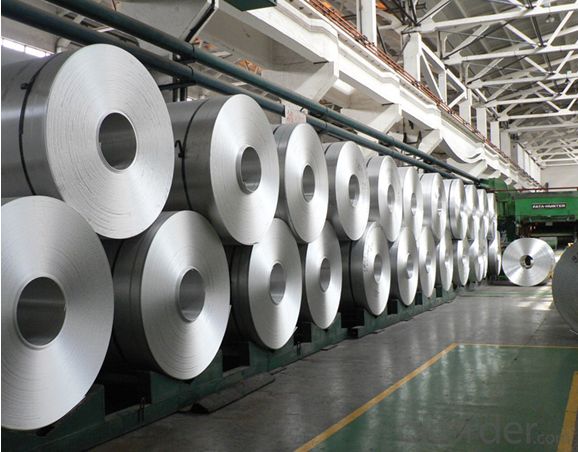
- Q: What are the different grades of aluminum ingots?
- The different grades of aluminum ingots include primary, secondary, and specialty grades. Primary aluminum ingots are produced from pure aluminum ore and are of the highest quality. Secondary aluminum ingots are made from recycled aluminum and may contain impurities. Specialty grades of aluminum ingots are tailored for specific applications and can have unique properties, such as increased strength or corrosion resistance.
- Q: How to make aluminium box into aluminium ingot?
- The problem of aluminum is not high. It can be dissolved directly in a dry pan, but it should not be dissolved directly because the aluminum ingot is pure aluminum, and the aluminum case should have impurities.The smoke isn't too big.
- Q: Difference between ingots and alumina
- In a word, alumina can be used to make ingots, and aluminium ingots are a large aluminum block
- Q: How are aluminum ingots used in the production of building facades?
- The production of building facades heavily relies on the essential properties and versatility of aluminum ingots. These ingots enable the creation of lightweight, durable, and aesthetically pleasing facades in modern architecture. To begin, aluminum ingots are melted and cast into various shapes and sizes according to the specific design requirements of the building facade. This casting process ensures that the aluminum can be easily manipulated and fabricated into different facade components. Once cast, the ingots can be extruded or rolled into sheets, panels, or profiles. These aluminum sheets or panels are then cut, shaped, and assembled to achieve the desired facade design. The malleability of aluminum allows for intricate designs and customization options, enabling architects to bring their creative visions to life. One of the major advantages of aluminum ingots in building facades is their lightweight nature. With a low density, aluminum is significantly lighter than other metals like steel. This characteristic reduces the overall weight of the facade, making installation easier and decreasing the load on the building structure. Moreover, the lightweight property of aluminum facilitates the creation of larger and more expansive facade designs, opening up greater design possibilities. Furthermore, aluminum ingots possess excellent corrosion resistance, a crucial attribute for building facades exposed to different weather conditions. The natural oxide layer that forms on the surface of aluminum protects it from rust and corrosion, ensuring the facade's longevity and durability. This resistance to corrosion reduces maintenance costs and extends the lifespan of the building facade. Additionally, aluminum ingots offer high thermal conductivity, which plays a significant role in effective thermal management for building facades. By helping regulate temperature and reducing energy consumption, aluminum facades contribute to sustainable building practices. These facades can also incorporate insulation materials to enhance energy efficiency. In terms of aesthetics, aluminum ingots provide a wide range of finishing options. They can be anodized, painted, or coated in various colors and textures to achieve the desired appearance. Aluminum facades can also be combined with other materials like glass or stone to create visually striking and modern facades that enhance the overall architectural design. In conclusion, the extensive use of aluminum ingots in building facades is due to their lightweight nature, corrosion resistance, thermal conductivity, and design versatility. These properties empower architects and designers to create durable, energy-efficient, and visually appealing facades that align with modern architectural trends.
- Q: How is the purity of aluminum ingots determined?
- The purity of aluminum ingots is determined through various methods such as chemical analysis, spectroscopy, and thermal analysis. These techniques involve measuring the composition of the ingots, detecting impurities, and determining the concentration of different elements present in the aluminum. Additionally, physical properties like density and electrical conductivity are also considered to assess the purity of aluminum ingots.
- Q: 102 non-standard aluminum ingot is like? And ordinary non-standard aluminum ingot what is the difference?
- 102 refers to ZLD102 bar, since there are grades, that is, GB aluminum ingots. Non-standard 102 may also refer to the main elements in the scope of the impurities exceeded the standard aluminum ingot, non-standard name.
- Q: How to cast aluminum ingots
- 1. coke furnace, graphite crucible.2., scrap aluminum is more miscellaneous, it is easiest to do non-standard ingots. If it can be classified, it can be processed by grade series. Aluminum alloys are all, not pure aluminum ingots.3., process and process can be simple and complex, quality requirements are not the same, but melting, slag removal, degassing, see how to do.4., the simplest treatment is a hodgepodge, simple slag, no need to purify. If the grade, it is necessary to sorting waste, it is a troublesome matter, not suitable for small workshops.
- Q: 15% of the iron in the ingot represents 1 tons of iron
- Solid waste disposal is through physical means (such as crushing, compression, drying, evaporation and burning) or biochemical effects (such as the oxidation, decomposition, digestion and absorption) to reduce its volume, accelerate its natural purification process. Usually also refers to the human production and life activities discarded solid and mud like substances, including waste water and waste gas from the solid particles.
- Q: What are the health risks associated with working with aluminum ingots?
- The health risks associated with working with aluminum ingots include inhalation of aluminum particles or fumes, which can lead to respiratory issues such as coughing, shortness of breath, and lung damage. Prolonged exposure may also increase the risk of developing lung diseases like asthma or bronchitis. Additionally, handling aluminum ingots without proper protective equipment may result in skin irritation or allergic reactions. It is crucial to follow safety guidelines and use appropriate personal protective equipment to minimize these risks.
- Q: I want to melt aluminum scrap into aluminium ingots. How can I make them?
- The use of immersion smelting, that is, at least half of the aluminum water in the furnace, the mechanical aluminum into the aluminum water, aluminum water to cover the raw materials, reduce oxidation and burning.
Send your message to us
Aluminum casting coil AA1070=P1020 for melt
- Loading Port:
- Tianjin
- Payment Terms:
- TT OR LC
- Min Order Qty:
- 200 m.t.
- Supply Capability:
- 5000 m.t./month
OKorder Service Pledge
OKorder Financial Service
Similar products
Hot products
Hot Searches
Related keywords
